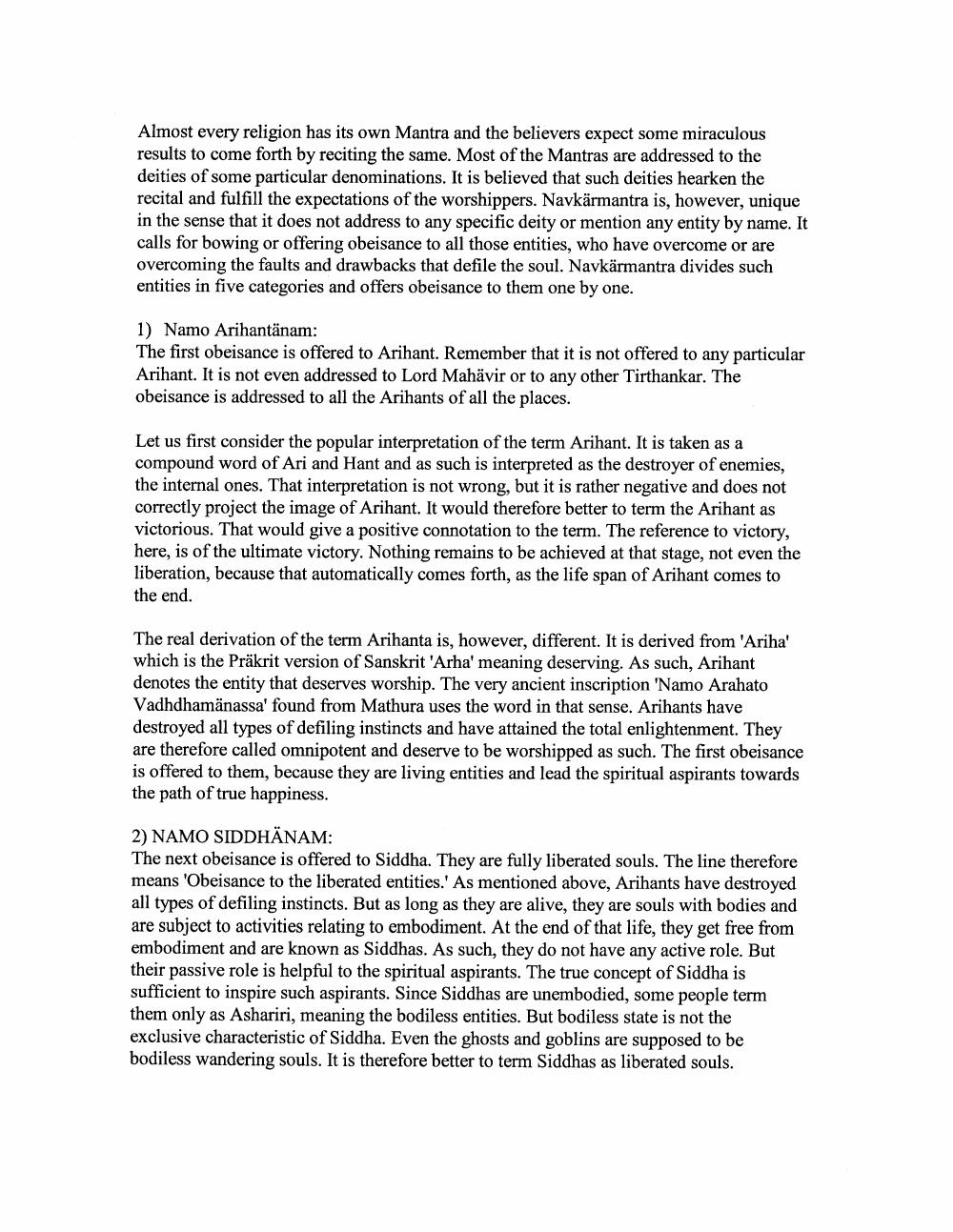Book Title: Samayik And Chaityavandan Vidhi Author(s): Manu Doshi Publisher: Manu Doshi View full book textPage 6
________________ Almost every religion has its own Mantra and the believers expect some miraculous results to come forth by reciting the same. Most of the Mantras are addressed to the deities of some particular denominations. It is believed that such deities hearken the recital and fulfill the expectations of the worshippers. Navkärmantra is, however, unique in the sense that it does not address to any specific deity or mention any entity by name. It calls for bowing or offering obeisance to all those entities, who have overcome or are overcoming the faults and drawbacks that defile the soul. Navkärmantra divides such entities in five categories and offers obeisance to them one by one. 1) Namo Arihantänam: The first obeisance is offered to Arihant. Remember that it is not offered to any particular Arihant. It is not even addressed to Lord Mahävir or to any other Tirthankar. The obeisance is addressed to all the Arihants of all the places. Let us first consider the popular interpretation of the term Arihant. It is taken as a compound word of Ari and Hant and as such is interpreted as the destroyer of enemies, the internal ones. That interpretation is not wrong, but it is rather negative and does not correctly project the image of Arihant. It would therefore better to term the Arihant as victorious. That would give a positive connotation to the term. The reference to victory, here, is of the ultimate victory. Nothing remains to be achieved at that stage, not even the liberation, because that automatically comes forth, as the life span of Arihant comes to the end. The real derivation of the term Arihanta is, however, different. It is derived from 'Ariha' which is the Präkrit version of Sanskrit 'Arha' meaning deserving. As such, Arihant denotes the entity that deserves worship. The very ancient inscription 'Namo Arahato Vadhdhamänassal found from Mathura uses the word in that sense. Arihants have destroyed all types of defiling instincts and have attained the total enlightenment. They are therefore called omnipotent and deserve to be worshipped as such. The first obeisance is offered to them, because they are living entities and lead the spiritual aspirants towards the path of true happiness. 2) NAMO SIDDHÄNAM: The next obeisance is offered to Siddha. They are fully liberated souls. The line therefore means 'Obeisance to the liberated entities.' As mentioned above, Arihants have destroyed all types of defiling instincts. But as long as they are alive, they are souls with bodies and are subject to activities relating to embodiment. At the end of that life, they get free from embodiment and are known as Siddhas. As such, they do not have any active role. But their passive role is helpful to the spiritual aspirants. The true concept of Siddha is sufficient to inspire such aspirants. Since Siddhas are unembodied, some people term them only as Ashariri, meaning the bodiless entities. But bodiless state is not the exclusive characteristic of Siddha. Even the ghosts and goblins are supposed to be bodiless wandering souls. It is therefore better to term Siddhas as liberated souls. the bodiless entities and goblins are suppoed souls.Page Navigation
1 ... 4 5 6 7 8 9 10 11 12 13 14 15 16 17 18 19 20 21 22 23 24 25 26 27 28 29 30 31 32 33 34 35 36 37 38 39 40 41 42 43 44 45 46 47 48 49 50 51 52 53 54 55 56 57 58 59 60 61 62 ... 76
